
|
September 5, 2007 |
Physical sciences welcome seven new faculty for 2007-08 Seven new members of the regular faculty are beginning work in the physical sciences at Brown this fall:
Angus Kingon in Engineering;
Bo Dong and
Hongjie Dong in Applied Mathematics;
Sarah Delaney in Chemistry;
Gregor Hirth in Geological Sciences;
Richard Kenyon and
Alex Kontorovich in Mathematics.
| |||
|
Brown University Home |
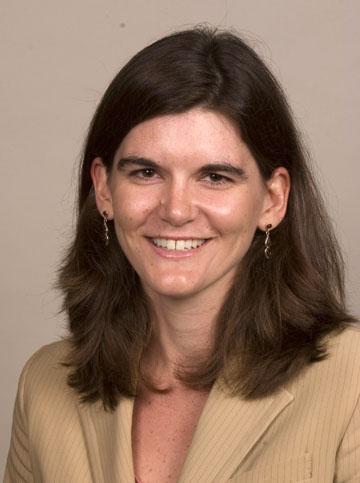
Sarah Delaney Sarah Delaney studies DNA damage and its biological repercussions. The topic has a wide range of practical applications -- which matter to Delaney -- but she also just loves this enigmatic molecule and the puzzles it holds. From her desk toys to her office lighting, Delaney has accumulated icons of her passion. “It’s my molecule,” she says. In the lab, Delaney’s enthusiasm takes on a matter-of-fact practicality. The DNA synthesizer she’s setting up will be the core of her lab – allowing her team to synthesize chunks of DNA with particular sequences. Then they’ll insert that DNA into cells and watch what happens. “As a chemistry lab,” she says, “we’re in a unique position to be able to go into the lab and synthesize a particular piece of DNA that contains a very specific type of DNA damage – and then we can study that piece of DNA that we’ve made and define its biological properties.” Some types of damage cause persistent mutations, she says, while others are innocuous. Cells have very sophisticated pathways for repairing some types of damage but not others. The result could be the difference between a passing sunburn and skin cancer or between a disease in one individual and a disease that is passed on to future generations. Delaney has been a science enthusiast since middle school, where she says she had a fantastic science teacher. In high school, the instructor with the crammed pocket protector and the wacky sense of humor kept her engaged. And while her college friends struggled with career anxiety, Delaney just kept doing chemistry. One day in an organic chemistry class, the professor filled the blackboard with a complex molecule and they spent the rest of the session “reverse-synthesizing” it – figuring out what steps and what reagents would be required to build that compound from simple chemical precursors. Delaney was hooked. After graduating from Middlebury College, she headed west to the California Institute of Technology for her Ph.D. and then completed a postdoctoral fellowship at MIT. Delaney is diving into the University and the City with her typical enthusiasm. She’s bought a condo, signed on a graduate student, and will be teaching chemical biology – an upper-level course based on primary literature – in her first semester. – Marty Downs 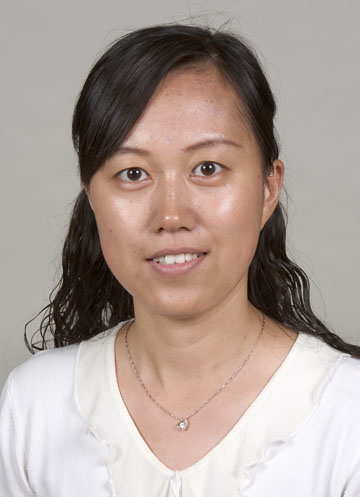
Bo Dong Bo Dong never seriously thought of doing anything other than mathematics with her life. The patterns intrigue her; the complexity challenges her; and she loves the idea that methods she devises could be applied to various practical problems. Dong works on numerical analysis in a class known as discontinuous Galerkin methods, which have applications in such areas as traffic flow, heat transfer, fluid dynamics and structural mechanics. Brown is particularly strong in this fast-growing area of applied mathematics, and Dong is delighted to be working with colleagues whose papers she has read as classics in her field. Other areas of interest include hybridized Galerkin methods and mixed methods on transport equations, convection-diffusion equations, and biharmonic equations. As she works to improve current numerical methods and devise new approaches, Dong says she asks three questions: 1) Is this method stable? 2) Is it accurate enough? 3) Is it efficient enough? After completing her undergraduate degree in mathematics at the University of Science and Technology of China, Dong earned her Ph.D. at the University of Minnesota with Bernardo Cockburn, where she taught courses in calculus and pre-calculus. Her goal is to build a research career like that of Cockburn’s – working on challenging and important problems, but never forgetting the fun of it. – Marty Downs 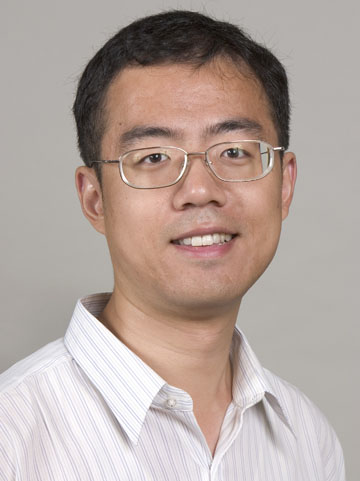
Hongjie Dong Remember how it feels to understand something completely new? Hongjie Dong does. His eyes light up when he talks about his father teaching him fractions in the first grade: “I only knew integers before, and then there was something different.” He likes to see that same light appear in his students’ faces and finds it especially rewarding to plant a seed that later grows into a love of mathematics. This fall, Dong will be teaching Honors Differential Equations (PDE) to Brown undergraduates and Topics in PDE at the graduate level. His research interests hover between pure and applied mathematics, Dong says, and they center on partial differential equations and probability theory – especially those, such as Navier-Stokes equations, with applications to fluid dynamics. While someone seeking to understand turbulence, climate change or swings in the stock market might pick up his work, Dong prefers to focus on the mathematical challenge of “using logic to get to a rigorous conclusion.” Dong comes to Brown from postdoctoral positions at the University of Chicago and the Institute for Advanced Study at Princeton. He earned his Ph.D. at the University of Minnesota with Nicolai Krylov and will be working most closely with Boris Rozovsky at Brown. And, by the way, he’s looking for a chess partner. – Marty Downs
Gregory Hirth Greg Hirth has hiked or all over the globe cruised to accomplish his research in geology: from the bottom of the ocean to the vast spaces of central Australia and Oman, from Mount St. Helens to Death Valley, from the mid-Atlantic to the Southwest Indian Ridge. After all that, he’s returning to Brown, having received his master’s degree and Ph.D. in geological sciences right here in Providence. His graduate advisor at Brown was Jan Tullis. “The big goals,” Hirth says, include “trying to understand how the interior of the Earth moves over long periods of time and how these movements effect the surface; that’s essential to understanding the planet. What we are doing is applying the principals of structural engineering and materials science to problems in geology. The more pressing needs include understanding the processes that set off earthquakes and volcanoes.” He adds, “There are also many practical applications for the future, including how the movements of giant ice sheets respond to global warming.” Hirth says his primary research interests fall into four categories: experimental rock deformation, application of experimental data, microstructures in natural rocks and structural geology, and modeling. Hirth comes to Brown from an associate scientist position in the Department of Geology and Geophysics at the Woods Hole Oceanographic Institution, also serving as research affiliate in the Department of Earth, Atmospheric, and Planetary Sciences at the Massachusetts Institute of Technology. His work has been published in Geology, Nature, Earth and Planetary Sciences, and Tectonophysics, among other journals. The Brown alumnus is also a member of the American Geophysical Union (AGU), a fellow of the Mineralogical Society of America, and was secretary of the tectonophysics section of the AGU. – Molly de Ramel 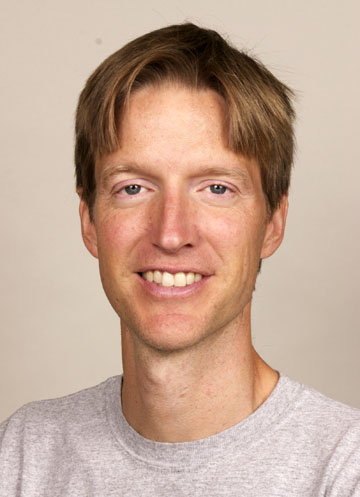
Richard Kenyon Richard Kenyon joins Brown from his position as professor in the mathematics department at the University of British Columbia. His interests are statistical mechanics, probability and discrete conformal geometry. He’s also managed to think and talk about the higher elements of mathematics in two languages: English and French, with a “Habilitation thesis” from the Universite Paris-Sud (Sur la dynamique, la combinatoire, and la statistique des pavages) and a Ph.D. from Princeton in mathematics. His work has taken him from Orsay, France, where he was the research director at the Centre National de Recherche Scientifique, to Redmond, Wash., where for four summers he was a visiting researcher in the Microsoft theory group. Kenyon says he is driven “by the possibility of exploration and discovery. In the field of probability in particular, people have recently discovered many somewhat mysterious connections with physics and string theory. It’s cool how mathematics is so useful to describe physical phenomena, and this is a prime example. Physics at atomic scales is really very simple, so simple that it becomes mathematics.” His prizes and awards have included the Prix Charles-Louis de Saulses de Freycinet from the French Academie des Sciences in 2002 and the Rollo Davidson prize in 2001. But what he’s most proud of is “understanding the fluctuations of a certain model of random surfaces (called the dimer model). Basically it is a way to draw a ‘random’ contour map or topographic map. You draw such a map and then ask questions such as how high, typically, is the highest mountain on this map. It turns out that this simple model has a certain property called ‘conformal invariance,’ which was predicted by physicists in the 1970s but confirmed only recently.” Kenyon joins the department of mathematics as a full professor. – Molly de Ramel 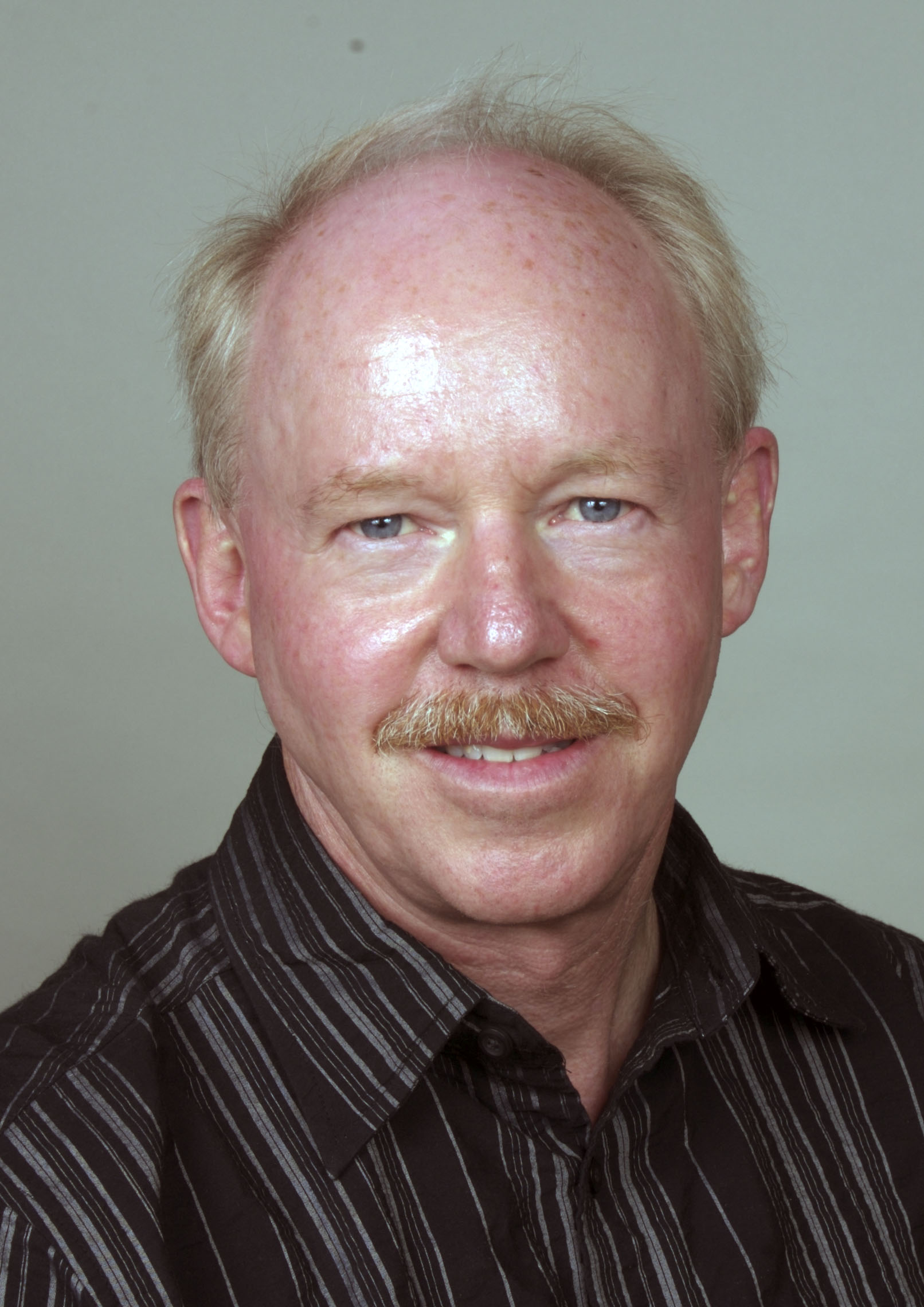
Angus Kingon Angus Kingon is a physical chemist, engineer, materials scientist, inventor, management professor, entrepreneur ... and Brown parent. All those hats will come together next January when he begins his service as the Barrett Hazeltine Professor and professor of engineering at Brown. He had heard of Brown’s legendary engineering professor decades ago. “Barrett preceded most of the non-business entrepreneurs,” Kingon said. “Engineering schools began studying entrepreneurship in the 1980s, but Barrett was already doing it during the 1970s.” Kingon’s son Ashley, a 2006 Brown graduate, took classes with Hazeltine, and it was as a Brown parent that Kingon first met Hazeltine – and was immediately impressed. As an academic field, entrepreneurship usually finds a home either in business and management or in engineering, but it does not fall cleanly and entirely into any single discipline. Business schools, Kingon said, understand how to run a business and how to draw on the expertise of social sciences to study the practices. Engineers, on the other hand, often begin with a technology, figuring out how a patent or a process might be commercially viable, where a given technology might lead and how it might prove useful. “You want to bridge that gap and use the best each area has to offer,” Kingon said. Kingon’s CV effectively closes that gap. It lists 14 U.S. and international patents for technologies employing ferroelectric thin-films, lanthanum oxide-based dielectrics, perovskite dielectric layers and others. He holds concurrent professorial appointments in both materials science and business management, and his professional writings – 290 refereed papers, seven books and six book chapters – cover both technology and management. He is a graduate of the University of the Witwaterstrand (B.Sc., 1974; B.Sc. with honors in chemistry, 1975) and did his graduate work at the University of South Africa (M.Sc., cum laude, in physical chemistry, 1977; Ph.D., in physical chemistry, 1981). He served as senior chief scientist at the National Physical Research Laboraqtory in South Africa from 1977 to 1983 and was a founding member of South Africa’s National Institute for Materials Research from 1983 to 1987. After postdoctoral research at Penn State and North Carolina State (1981-82), he joined the North Carolina faculty in 1987. In July 2008, Kingon will begin a three-year appointment as director of Brown’s Program in Commerce, Organization and Entrepreneurship (COE), a program, he said, that is well-positioned to engage people across many disciplines. “Brown is ready; Brown is a good place, a stimulating environment in which to do new things,” Kingon said. “In my meetings, I have been impressed at the degree of support from senior administration. President Simmons seems very open to new combinations that cross disciplines, that combine traditional strength in the liberal arts with engineering and entrepreneurship.” – Mark Nickel 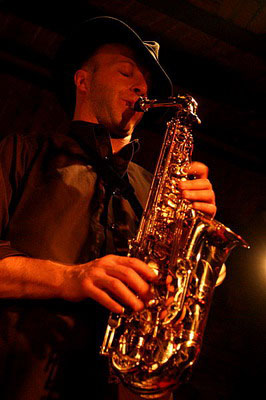
Alex Kontorovich Many researchers look for questions that have never been asked before. Alex Kontorovich likes the ones that have gone unanswered for a couple thousand years. He works in the area of number theory, seeking – for instance – a definitive answer to the question: How many pairs of prime numbers exist with values that differ by two? It’s not a purely esoteric endeavor – such number series find uses in computer security, identity verification and cryptography – but Kontorovich is clearly drawn by the challenge of a problem that many others have tried unsuccessfully to solve. Although he was only a teen-ager at the time, Kontorovich recalls with obvious pleasure the excitement surrounding Andrew Wiles’ proof of Fermat’s last theorem in 1994. Kontorovich finds it convenient that his research requires no laboratory or supercomputer. Using mainly pencil and paper, he is able to work on planes and trains – which is especially helpful, since he performs several times a month and travels extensively playing clarinet and saxophone with eight different klezmer and jazz ensembles. His MySpace page, myspace.com/deepminor, offers a sample of his playing, which reviewers have called “hypnotic” and compared to that of klezmer legend Dave Tarras. His latest album, Deep Minor, is due for release in the United States in September 2007 (liner notes are also available on the Web site). “If I have too much time to think about math, I get stuck,” says Kontorovich, who uses music to get perspective on his research. “It’s a nice way to force me to back a way from the math for a little while and look at the bigger picture.” Kontorovich, who comes to Brown straight from his Ph.D. studies at Columbia University, is looking forward to being part of Brown’s small, tightly knit mathematics community. He’s also looking forward to teaching, which he compares to traveling in “a land that we’re going to go visit together.” “I can show you the way,” he says, “but you have to do the hiking yourself.” – Marty Downs ###### | |||